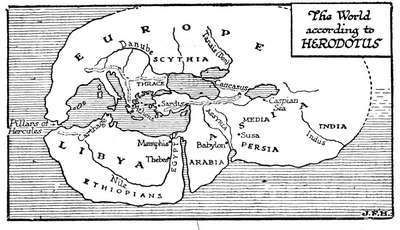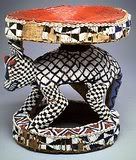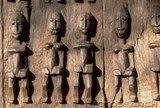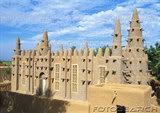Friday, June 1, 2007
Timelines -and Maps - ancient and classical history
http://ancienthistory.about.com/library/bl/bl_time_africa
_subsaharan.htm
Timelines
Sub-Saharan
Egypt Sub Saharan Africa
Africa - Web Chronology ProjectTimeline of Africa south of the Sahara, from the North Park University Web Chronology Project. Ancient period includes Urbanization South of the Sahara.
African Timeline Approximately dated events include: earliest stone tools in Ethiopia and East Africa, first settlements in Nile Delta, Sahara fertile enough for human occupation, earliest cave drawings in Sahara, building of the Great Pyramid, Nok culture, introduction of camels, East African coast starts trading with Romans and Arabs and Eastern Africa starts growing yams and bananas.
Age of Exploration Timeline From Snefru in 3200 B.C. to Cook's death in 1779, a timeline of adventurers.
Civilizations TimelineColorful timeline of most major civilizations. Easy to see at a glance.
Cross Cultural TimelineFrom The History Channel, this graphic timeline shows what was happening in America, Europe, Middle East, Egypt, India, China, Japan, and Africa for 500 years starting in 500 B.C.
Ancient Maps:
http://ancienthistory.about.com/od/maps/ss/mapsindex.htm
http://ancienthistory.about.com/od/maps/ss/mapsindex_2.htm
Ancient Atlas - Maps and Geography of the Ancient World

Map Showing Herodotus' View of the Ancient World
Clipart.com
Geographic entities mentioned in ancient history do not correspond well with those in a modern atlas: A map of Rome (or the Roman Empire) includes much of what we think of as Europe, parts of Asia, and Northern Africa; the geographic borders of Asia fluctuated with the dominant empires; Sudan and Egypt belong in both the Neareast and Africa.
The map above shows how the 5th Century B.C. "father of history" Herodotus viewed the world. He describes it in the 4th book of his histories. However odd his map may look, it was an improvement. The following passage explains his advances on earlier maps showing 3 continents, Europe, Asia, and Libya:
I wonder then at those who have parted off and divided the world into Libya, Asia, and Europe, since the difference between these is not small; for in length Europe extends along by both, while in breadth it is clear to me that it is beyond comparison larger; for Libya furnishes proofs about itself that it is surrounded by sea, except so much of it as borders upon Asia....
Ancient Atlas A to Z
_subsaharan.htm
Timelines
Sub-Saharan
Egypt Sub Saharan Africa
Africa - Web Chronology ProjectTimeline of Africa south of the Sahara, from the North Park University Web Chronology Project. Ancient period includes Urbanization South of the Sahara.
African Timeline Approximately dated events include: earliest stone tools in Ethiopia and East Africa, first settlements in Nile Delta, Sahara fertile enough for human occupation, earliest cave drawings in Sahara, building of the Great Pyramid, Nok culture, introduction of camels, East African coast starts trading with Romans and Arabs and Eastern Africa starts growing yams and bananas.
Age of Exploration Timeline From Snefru in 3200 B.C. to Cook's death in 1779, a timeline of adventurers.
Civilizations TimelineColorful timeline of most major civilizations. Easy to see at a glance.
Cross Cultural TimelineFrom The History Channel, this graphic timeline shows what was happening in America, Europe, Middle East, Egypt, India, China, Japan, and Africa for 500 years starting in 500 B.C.
Ancient Maps:
http://ancienthistory.about.com/od/maps/ss/mapsindex.htm
http://ancienthistory.about.com/od/maps/ss/mapsindex_2.htm
Ancient Atlas - Maps and Geography of the Ancient World

Map Showing Herodotus' View of the Ancient World
Clipart.com
Geographic entities mentioned in ancient history do not correspond well with those in a modern atlas: A map of Rome (or the Roman Empire) includes much of what we think of as Europe, parts of Asia, and Northern Africa; the geographic borders of Asia fluctuated with the dominant empires; Sudan and Egypt belong in both the Neareast and Africa.
The map above shows how the 5th Century B.C. "father of history" Herodotus viewed the world. He describes it in the 4th book of his histories. However odd his map may look, it was an improvement. The following passage explains his advances on earlier maps showing 3 continents, Europe, Asia, and Libya:
I wonder then at those who have parted off and divided the world into Libya, Asia, and Europe, since the difference between these is not small; for in length Europe extends along by both, while in breadth it is clear to me that it is beyond comparison larger; for Libya furnishes proofs about itself that it is surrounded by sea, except so much of it as borders upon Asia....
Ancient Atlas A to Z
Labels: Timelines and Maps ancient history
Subscribe to Comments [Atom]







